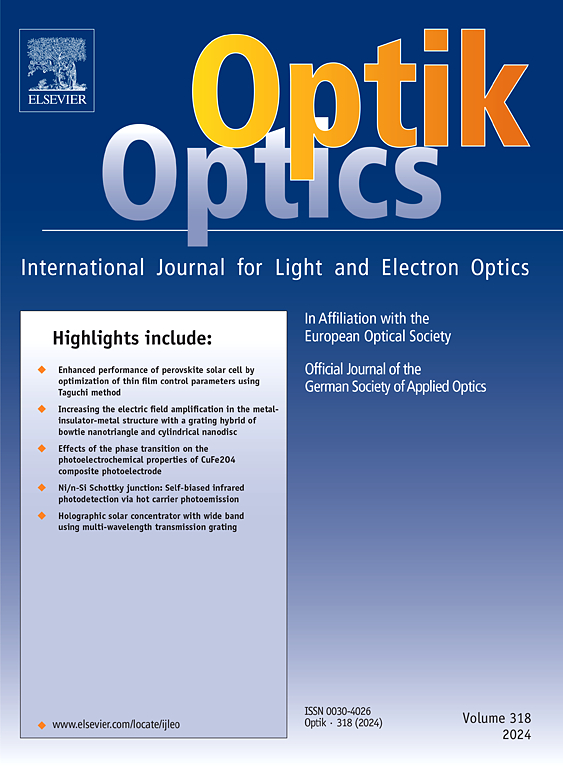Unveiling the potential of Ca₃PBr₃ perovskite for solar applications: A study of structural, mechanical, electronic and optical properties
IF 3.1
3区 物理与天体物理
Q2 Engineering
引用次数: 0
Abstract
Perovskite materials have garnered significant interest because of their remarkable structural, electronic and optical properties which make them highly suitable choice for various applications. This work provides a thorough analysis of the Ca3PBr3 perovskite using Quantum ATK tool while employing density functional theory (DFT) approximations. The results from this study provide the electronic characteristics of the material, particularly its ability to conduct electricity. The calculated lattice constant of the material is 5.96 Å. The objective of the research is to investigate the impact of Ca3PBr3's structural, mechanical, electronic, and optical properties using first-principles density functional theory. Ca3PBr3 has been found to possesses direct band gap of 1.682 eV. The LCAO calculator was employed to analyse the characteristics using the GGA (Generalized Gradient Approximation) and PBE (Perdew–Burke–Ernzerhof) functionals. In order to evaluate the structural characteristics, it is essential to determine the lattice parameter (a), atomic locations and density of states (DOS), elastic constants (C11, C12, and C44), together with the bulk, shear and Young's moduli. The Ca3PBr3 material has been found to exhibit optical properties, with a calculated reflectivity of 0.044. Furthermore, the material's susceptibility is 2.2831. In addition to its capability to alter optical properties, this makes Ca3PBr3 an additional possibility that is interesting for use in optical systems.
求助全文
约1分钟内获得全文
求助全文
来源期刊

Optik
物理-光学
CiteScore
6.90
自引率
12.90%
发文量
1471
审稿时长
46 days
期刊介绍:
Optik publishes articles on all subjects related to light and electron optics and offers a survey on the state of research and technical development within the following fields:
Optics:
-Optics design, geometrical and beam optics, wave optics-
Optical and micro-optical components, diffractive optics, devices and systems-
Photoelectric and optoelectronic devices-
Optical properties of materials, nonlinear optics, wave propagation and transmission in homogeneous and inhomogeneous materials-
Information optics, image formation and processing, holographic techniques, microscopes and spectrometer techniques, and image analysis-
Optical testing and measuring techniques-
Optical communication and computing-
Physiological optics-
As well as other related topics.
 求助内容:
求助内容: 应助结果提醒方式:
应助结果提醒方式:


